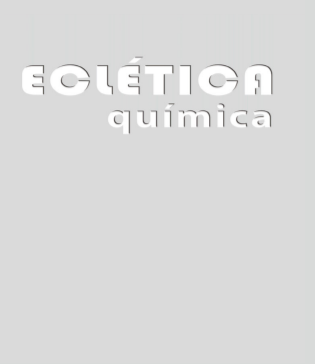Abstract
Colloid chemical behavior of indole dihydropyrimidines in non-aqueous solvent mixture benzene-methanol of varying composition has been investigated by viscometric measurements at 303K± 0.1. The viscosity of the system increases with the increase in concentration. The Trend Change Point (TCP) values have been determined by intersection of two straight lines, which are found to be dependent on the composition of solvent mixtures. The study confirms that the nature of synthesized compounds agglomerate formed below and above 50% benzene concentration is quite different. The viscometric data have been analyzed in terms of Einstein, Vand, Moulik and Jones-Dole equations. These well known equations have been successfully applied to explain the results of viscosity measurements and the viscometric parameters show that the behavior of compound changes in the proximity of 50% benzene concentration.
References
M.Gracia, Valverde and T. Torroba, Molecules, 10 (2005) 318.
C. O. Kappe, Terahedron, 49 (1993) 6937.
T. Matsuda, J. Hirao, Nippon Kagaku Zasshi, 86 (1965) 1195.
Birgit Jauk, Tetiana Pernat and C. O. Kappe, Molecules. 5 (2000) 227.
C. O. Kappe, G. Farber, J. Chem. Soc., Perkin Trans, 1 (1991) 1342.
Y. S. Sadanandam, M. M. Shetty, P. V. Diwan, Eur. J. Med. Chem.27 (1992) 87.
(7a) S. Sukemi, H. J. Sun, Org. Chem. 56 (1991) 4304.
(7b) Y. Kawasaki, M. Yamashita, S. Otha, Chem. Pharma Bull. 44 (1996) 1831.
Mieczyslaw, Makosza, Pure & Appl. Chem. 69(3) (1997) 559.
K. Lee, S. J. Moon, D. C. Ha, Kee- In Lee; Y.D. Gong, and J. C. Lee, Bull Korean Chem. Soc. 27 (2006) 7.
(10a) J. Thesing, G. Sembler, and G. Mohr, Chem. Ber. 95 (1962) 2205. (10b) G. W. Gribble, C. F. Nutaitis, Org. Prep. Proc. Int. 17 (1985) 317.
M. Duflos, Marie – Renee J. Nourrisson, J. Brelet, Courant, Guillaume Le Baut, N. Grimoud, Jean – Yves Petit.; Eur. J. Med. Chem. 36 (2001) 545.
(12a) D. S. Bose, L. Fatima, H. B. Mereyala, J. Org. Chem. 68 (2003) 587. (12b) J. Lu, Y. Bai, Synthesis (2002) 466.
H. Suzuki, Journal of American Oil Chemists Society 47 (1969) 273. (13b) K.N. Mehrotra, V.P. Mehta, T.N. Nagar, Journal fur Praktische Chemie 312 (4) (1970) 545. (13c) R.P. Verma, K. Singh, H. Singh, Annali di chimica 68(5) (1978) 415. (13d) V.P. Mehta, M. Hasan, L.C. Heda, Afinidad 39
(1982) 385.
A. Einstein, Annalen der Physik 19 (1906) 289.
V. Vand , Journal Physical Colloid Chemistry 52 (1948) 277.
K.N. Mehrotra, K. Tandon, M.K. Rawat, Journal of the Indian Chemical Society 69 (1990) 719.
S.P. Moulik, The Journal of Physical Chemistry 72 (1968) 4682.
G. Jones, M. Dole, The Journal of The American Chemical Society 51 (1929) 2950.

This work is licensed under a Creative Commons Attribution 4.0 International License.
Copyright (c) 2018 Eclética Química Journal





